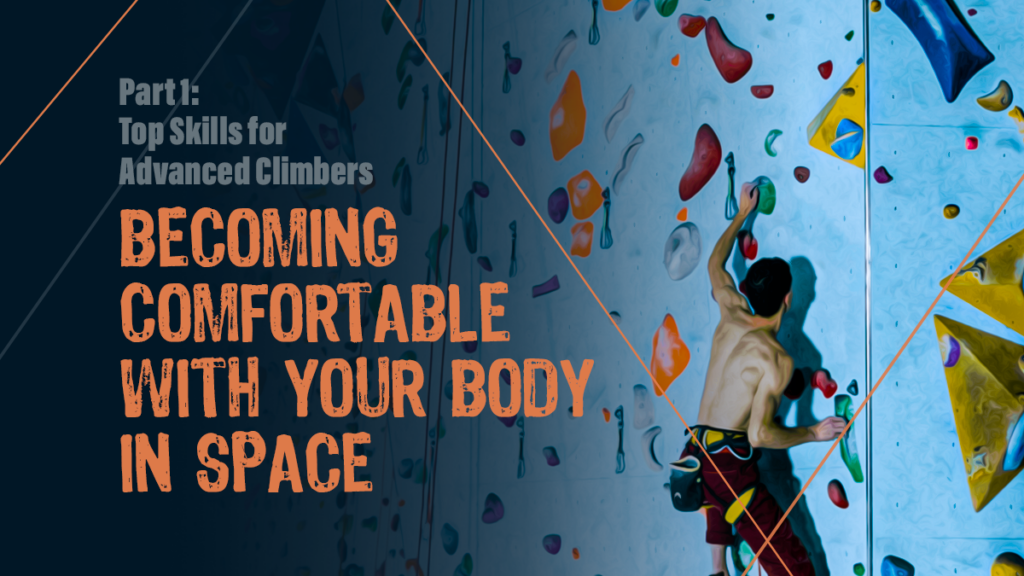Get ready! This article is the first of a three-part series. Upon completion of publication, we will lay out five major components identified as the most critical skills for advancing in your climbing. Warning, this won’t be your average “Technical Skills for Advanced Footwork” article series. Instead, we’ll present you with skills requiring adept personal awareness and the willingness to embrace processes that require practice, practice, and more practice to perfect. As a preview, we’ll let you know the big five we will flesh out over this three-part series. First, you’ll learn proprioception and coordination and why every advanced climber commits to mastering these skills. From there, we will go in-depth into what we call “The Art of Route Reading.” Finally, put the bow on the advanced climber skills package emphasizing mindset and an efficient projecting approach.
Not every climber looking to advance their climbing skills does so for the same reasons. Some are looking to reach a high level of competition, some are looking to send challenging outdoor climbs, and some are just looking to push their personal boundaries. Keeping each of these in mind, each skill includes an explanation of the relevance in a competition setting, for sending outdoor climbs, and for pushing yourself due to strong intrinsic motivation.
Proprioception
In simplest terms, proprioception means having persistent awareness while climbing. The simple equation to achieve the greatest proprioception equals more climbing and creating awareness when you climb.
The specific awareness you aim to improve is that of your body in space at all times.
Unlike the other skills on the list, categorized as “hard skills,” proprioception is a “soft skill” acquired over time and with practice. Broadly speaking, it can be distilled into one main idea:
Climbing with intention from your warm-up through your cool-down.
This means actively thinking about where your body is the entire time you are on the rock wall. The ultimate goal of developing proprioception is to gain confidence in knowing where the climbing holds are in relation to you and how to move your body to use the hold effectively. Start slowly, mentally checking the distance your hands and feet are from each other and your center of mass relative to the holds. This may take several seconds for each movement, and that’s ok! The more you practice, the faster you’ll get. Eventually, the ‘thinking’ will be automatic; you’ll intuitively understand when you are in space and be more efficient on the wall.
Coordination
Coordination comes into play when facing dynamic movements, and greater proprioception can boost confidence in your ability to tackle coordinated climbing movements. To master coordination, you must expose yourself to various dynamic movements and practice them repeatedly.
Practice three key components while engaging in coordinated movements to become an expert.

1. Learn how to generate direction-specific momentum. If the hold you are moving to is above your head, you must learn to generate upward movement, but if the hold is laterally placed, you must generate horizontal momentum.
2. Learn how to stop your momentum intentionally. When you reach the intended hold, you need to be able to stop your momentum and keep climbing. Too much swinging could cause you to fall off the hold or waste too much energy.
3. Understand how to generate power with your arms and legs simultaneously. In most cases, dynamic movements require simultaneous pushing with your legs and pulling with your arms. While executing one at a time is natural, telling yourself to pull and push hard is more complex.
Get creative if you have limited dynamic coordination moves at your gym/crag. Make up your own, or use coordination tools such as colored sticks or tennis balls. Playing/practicing other sports/activities can help get your body used to combination movements, such as yoga, gymnastics, calisthenics, basketball, and other mainstream sports.
This is only part one of three, so check back to continue building your advanced climber repertoire. Every skill presented in this series will take patience and repetition to master, so as a word of caution, don’t set high expectations. However, stick with your training, incorporate intentional proprioception, and seek out coordination-specific movement. You’ll find both becoming second nature! If you have any questions on skills discussed up until now, drop us a note in the comments; we’d love to hear from you!

